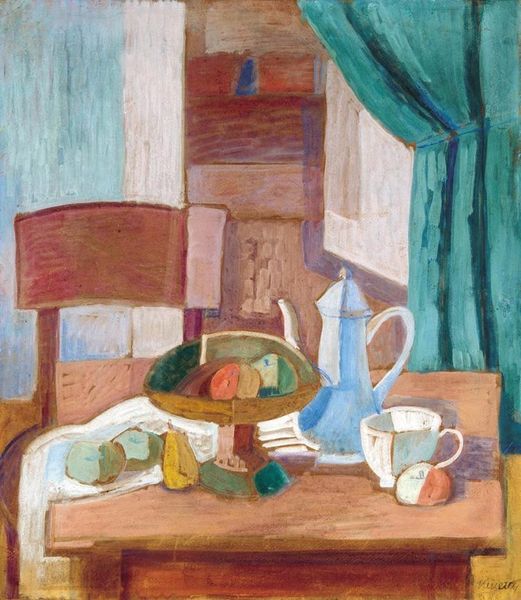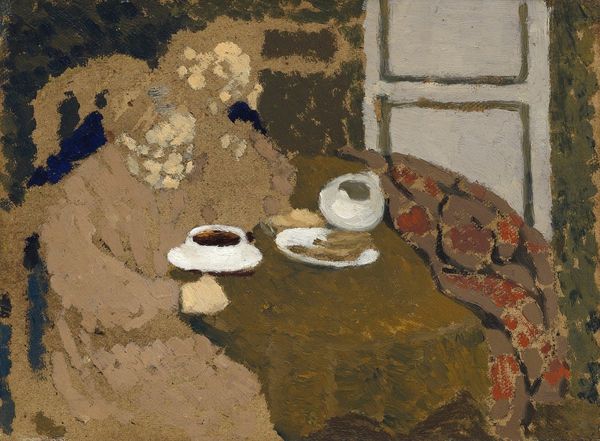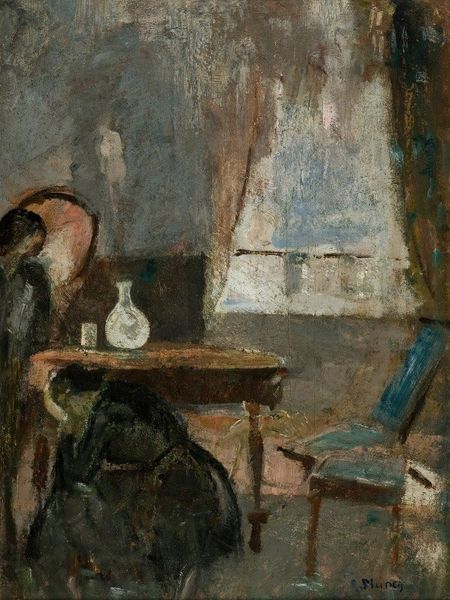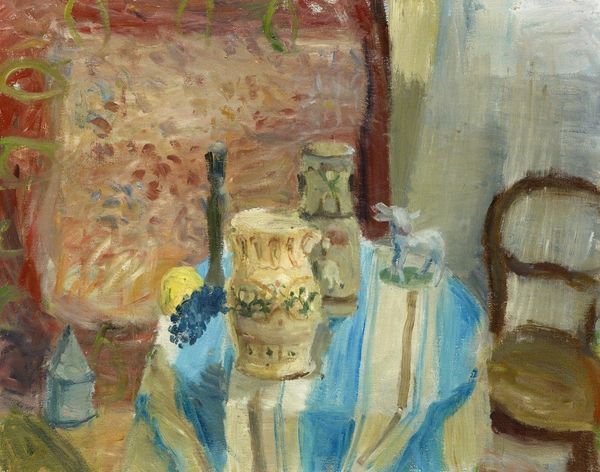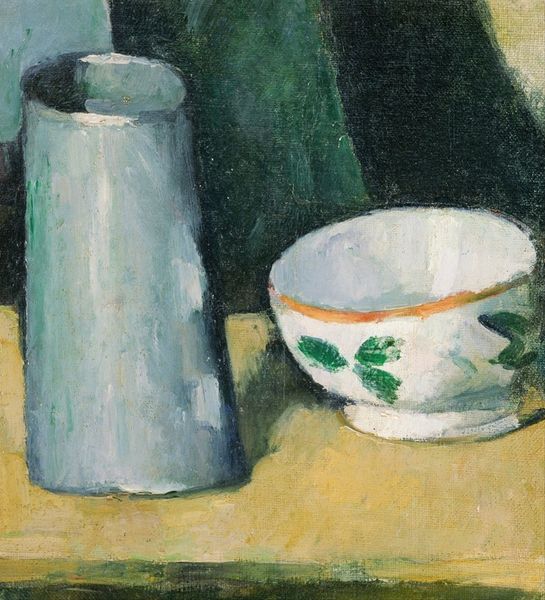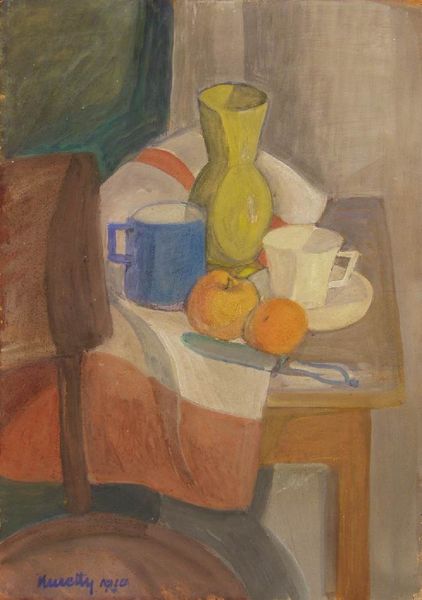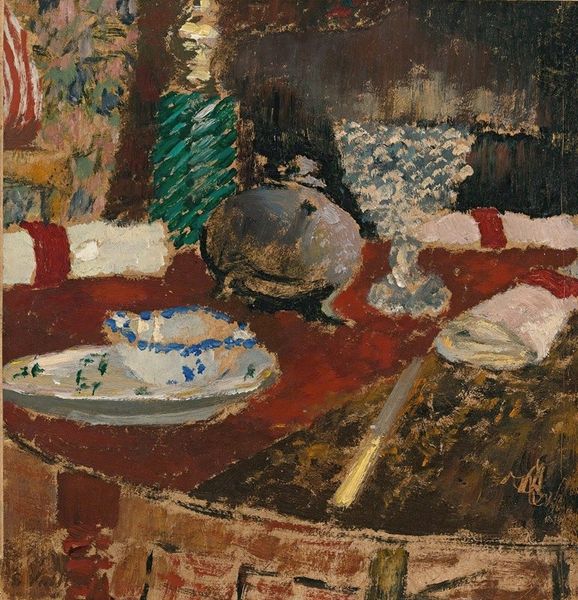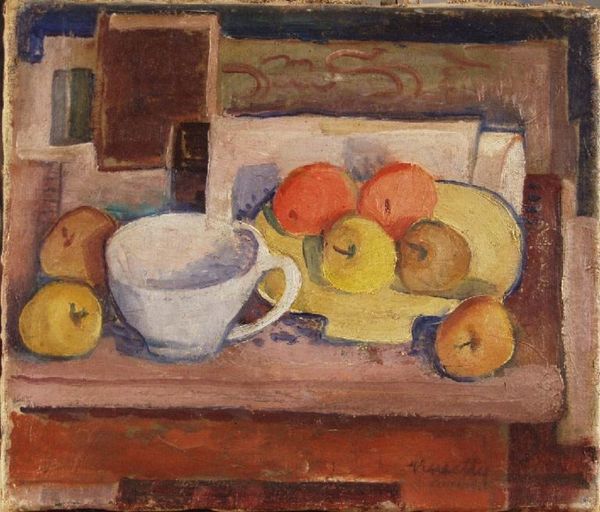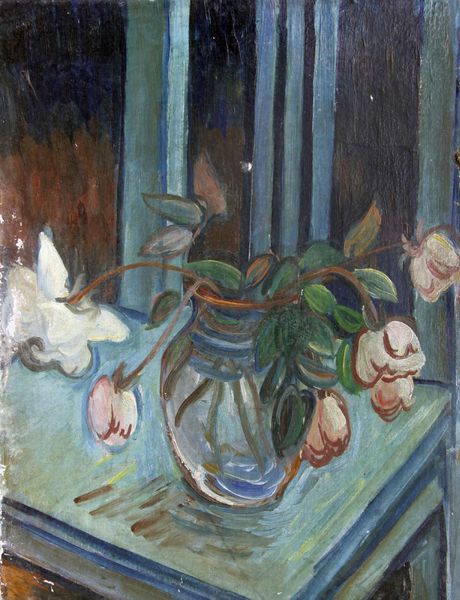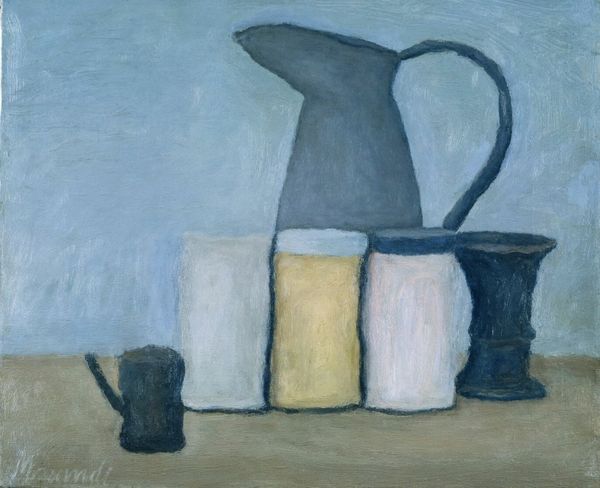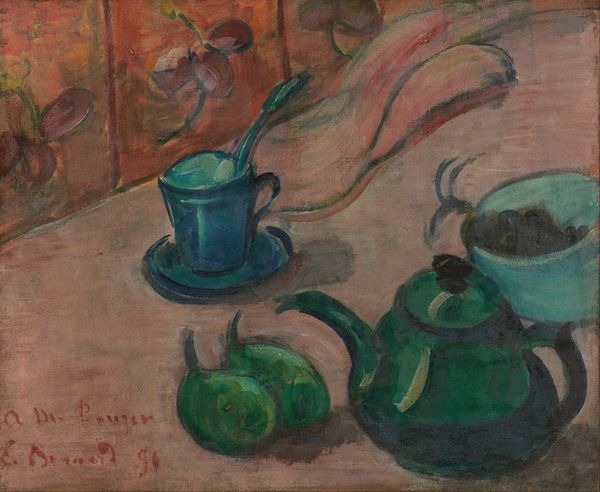
painting, oil-paint
#
painting
#
oil-paint
#
oil painting
#
genre-painting
#
post-impressionism
#
watercolor
Copyright: Public Domain: Artvee
Editor: Here we have Emile Bernard’s “Nature Morte Au Pichet Et À La Tasse,” created around 1889, using oil paint. What strikes me immediately is the rough texture, almost like raw clay. It makes the everyday objects seem…well, heavy. How do you interpret this work? Curator: The roughness is precisely the point, isn't it? Bernard's manipulation of oil paint transcends mere representation. The visible brushstrokes, the thick application of pigment – these elements highlight the labor involved, the physicality of art making. It’s a blatant rejection of academic polish. Editor: So you’re saying he's emphasizing the work that goes *into* making art, rather than just showing us pretty fruit? Curator: Precisely. Consider the materials themselves: oil paint, canvas. They're products of industry, of a certain social and economic system. And then there’s the question of audience. Who is this painting *for*? Is it destined for a wealthy collector's salon, or does its deliberately unrefined quality suggest a different kind of engagement, perhaps a critique of that very system? Editor: I hadn’t thought about it like that before! It makes me reconsider all the hidden labour and context behind what I see in a museum. Curator: Look also at the everyday objects represented, a pitcher, a cup, lemons, bread. Consider these objects as items of commerce. How does their humble presentation, rendered through such visibly worked materials, complicate their role as commodities? The knife even. Is it ready to be used, and on what, by whom? What socioeconomic status does Bernard imply here? Editor: That's really fascinating, looking at even these ordinary objects in terms of labour and context. It really changes my view of the piece. Thank you for this approach, Curator. Curator: Indeed, the most profound insights often arise from a keen appreciation of art's material foundations.
Comments
No comments
Be the first to comment and join the conversation on the ultimate creative platform.
